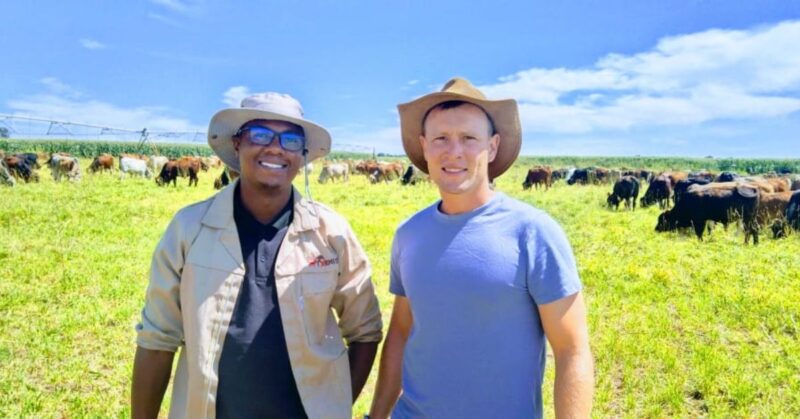When it comes to sustainable livestock farming, Ernest Makua is one of the leading voices shaping South Africa’s transition to climate-smart production. As a livestock technical advisor at Red Meat Industry Services (RMIS), he presented his latest research on nutrient circularity at the Global Greenhouse Gas and Animal Agriculture Conference in Nairobi, Kenya.
His work is supported by the New Zealand government through the Global Research Alliance on Agricultural Greenhouse Gases, in collaboration with the University of Pretoria, the University of South Africa, and RMIS. It explores how farmers can keep valuable nutrients cycling within their systems, boosting soil health, productivity, and profitability while cutting emissions.
Makua shares practical insights on how small- and medium-scale farmers can make their operations more efficient, climate-smart, and resilient in an exclusive interview with Food For Mzansi.
Ivor Price: What does “nutrient circularity” mean, and why does it matter for livestock farmers in South Africa?
Ernest Makua: Nutrient circularity means keeping key nutrients like nitrogen, phosphorus, and potassium within the farm system instead of losing them to the environment. For livestock farmers, it involves using manure and grazing patterns to feed pastures and improve soil fertility. This reduces input costs, enhances pasture growth, and supports animal health while lowering environmental impacts.

How can sustainable nutrient management help farmers reduce greenhouse gas emissions on their farms without hurting productivity?
By using nutrients more efficiently, farmers rely less on synthetic fertilisers, which reduces emissions from production and use. Proper manure management and improved grazing practices keep nutrients on the farm and improve pasture growth, which supports animal health. In this way, productivity is maintained or improved while emissions per unit of output decrease.
Based on your research, what are some practical steps small- and medium-scale farmers can take to manage nutrients more efficiently?
Farmers can collect and compost manure to return nutrients to pastures, integrate livestock and crop residues to feed animals, and rotate grazing to distribute nutrients evenly. Soil testing and targeted fertilisation ensure inputs match crop or pasture needs, reducing waste. Even small changes, such as improved feeding and manure reuse, can increase efficiency and farm profitability.
Related stories
- RMIS launches crisis centre to tackle FMD
- SA’s beef surplus fails to bring down red meat prices
- R91m in energy relief protects farmers against power cuts
- Farmers, funders unite for true agri transformation in potato industry
You mentioned different farm typologies. Can you give examples of how nutrient circularity might look on a cattle farm versus a mixed livestock farm?
On a cattle-only farm, rotational or high-density grazing helps manure fertilise pastures, while collected manure from pens can be composted and spread back on paddocks. On a mixed livestock farm, manure from different animals can be applied to crops or fodder fields, and crop residues can feed animals, creating a loop across enterprises. The principle is the same: keep nutrients within the system and reuse them effectively.
What advice would you give South African farmers who want to make their operations more climate-smart while still keeping their livestock healthy and profitable?
Start by using the resources you already have, such as manure and pastures, to feed the system efficiently. Focus on improving soil and pasture health, monitoring nutrients, and adopting grazing or manure management practices that recycle nutrients. Even small changes can reduce emissions, improve productivity, and make farms more resilient to climate variability.
READ NEXT: Early-bird tickets live for the 2026 Mzansi Young Farmers Indaba

EARLY-BIRD TICKETS ARE AVAILABLE NOW!
Africa’s biggest youth-in-agriculture gathering is back – and it’s only getting bigger!

















